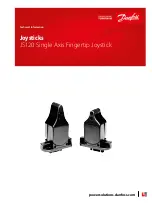
Rev 1.3 22.07.09
Dingo Reference Manual
5
Features
The Dingo series of solar controllers is
exceptionally versatile. They give the user
unparalleled capability to adjust the function of the
controller and to monitor the performance of the
energy system.
To cater for non technical users, the Dingo has
four preset programs which can be used without
needing to understand the details of its operation.
For those with a good understanding of solar
regulation, there is another program, which allows
all the settings to be adjusted if required.
Once the program has been selected, it is
possible to disable any further adjustment. This
prevents unauthorised adjustment of settings.
Although the Dingo is primarily a device to control the
charging of batteries from solar electric (photovoltaic)
panels, it can also be used with other energy sources
such as wind, microhydro and fuel driven generators.
The Dingo supports a variety of regulation
methods. It supports slow speed switching and
fixed frequency pulse width modulation (PWM)
control in series and shunt modes.
Low battery voltage load disconnection is
provided, as are an alarm, facility to control the
charging of a second battery bank and control for
a back up generator. The event controller can
be used to control lights, pumping, waste energy
use and other timer functions.
A temperature sensor can be added to correct
the regulation voltages for battery temperature.
There is an input for measuring external voltages.
A serial interface is provided for accessories
including extra switch blocks, remote current
sensors and communication with a computer/
modem.
Using an external current shunt attached to
a remote current sensor (DSA) allows the
controller to see other current flows in the
system.
The Dingo can control larger systems by adding
external switch blocks attached to the serial bus.
The DUSB or D232 interfaces allows remote
monitoring and adjustment. Custom settings
can be stored on a computer and uploaded into
the controller. Data from the controller can be
downloaded into the computer and displayed
easily.
Overload Protection
The Dingo has overcurrent protection on both
the load and charge switches.
If the user accidently short circuits the load or
the charge connections, then the switch will turn
off very quickly before any damage is done to the
switch.
If the user overloads the load switch, then the
load switch will disconnect after a period of
time to protect itself from overheating. It will
reconnect automatically once the switch cools
If the charge input is overloaded, then the
controller will turn the charge switch off, as
required, to reduce the average charge current
into the Dingo.
For details see section A.4.
Thermal Protection
The Dingo has a temperature sensor on the
circuit board. The function of this sensor is to
tell the Dingo how hot it’s own circuit board
is so that it can reduce the charge current (the
major heating source) in order to protect against
overheating.
See section A.4 for details of thermal derating
Menus
The Dingo has a simple main menu. This is
described in the user guide and provides most
the information required for normal use.
Behind each of the main menu screens are sub
menus. These are entered by doing a long push
in the main menu. They allow access to more
information and control of more advanced
features.
The following pages describe each submenu in
detail.
1





































